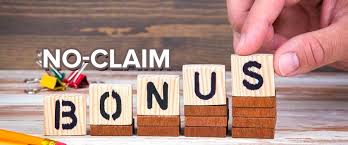What is Insurance and How Does It Work? A Complete Guide
Life is full of uncertainties. No matter how carefully we plan, unexpected events—like accidents, illnesses, natural disasters, or financial losses—can disrupt our lives in ways we don’t anticipate. This is where insurance comes into play. Insurance acts as a financial safety net, helping individuals, families, and businesses recover when unforeseen risks turn into reality.
In this post, we’ll break down what insurance is, how it works, and why it’s such an important part of modern life.
What is Insurance?
At its core, insurance is a contract (called a policy) between an individual or business (the policyholder) and an insurance company (the insurer). The policyholder pays a fee, known as a premium, to the insurance company. In return, the insurance company promises to provide financial protection or compensation if specific events (called covered risks) occur.
Think of insurance as a way of sharing risk: instead of one person bearing the full cost of an unexpected event, the financial burden is spread across many people through the insurance pool.
How Does Insurance Work?
To understand insurance, let’s break it down step by step:
1. Paying Premiums
When you buy an insurance policy, you pay a regular fee—monthly, quarterly, or annually—known as a premium. The amount depends on several factors, such as your risk level, the type of coverage, and the amount of protection you want.
For example:
- A young, healthy non-smoker will pay less for health insurance than someone older with pre-existing conditions.
- A sports car owner might pay higher auto insurance premiums than someone with a safe family sedan.
2. The Insurance Pool
All the premiums collected from policyholders go into a collective pool. This pool is used to pay out claims when covered losses occur.
For example: if one policyholder’s house burns down, the insurance company uses money from the pool to cover the cost of rebuilding that home.
3. Filing a Claim
When a policyholder experiences a covered loss (like a car accident or medical emergency), they submit a request called a claim to the insurance company.
The insurer reviews the claim, checks if it falls under the policy’s coverage, and, if approved, pays compensation (either to the policyholder or directly to service providers, such as hospitals or repair shops).
4. Deductibles and Coverage Limits
Most insurance policies include:
- Deductibles: The amount the policyholder must pay out of pocket before insurance kicks in. For example, if your car insurance has a $500 deductible and the damage costs $2,000, you pay $500 and the insurer covers the remaining $1,500.
- Coverage limits: The maximum amount the insurer will pay for a claim or during the entire policy term.
Types of Insurance
There are many different types of insurance, each designed to cover specific risks. Some of the most common include:
- Health Insurance – Covers medical expenses such as doctor visits, hospital stays, surgeries, and prescriptions.
- Life Insurance – Provides a payout to beneficiaries upon the policyholder’s death, ensuring financial security for loved ones.
- Auto Insurance – Covers damages to vehicles, liability for accidents, and medical expenses from car crashes.
- Homeowners/Renters Insurance – Protects against damage or loss of property due to fire, theft, natural disasters, or accidents.
- Travel Insurance – Covers trip cancellations, medical emergencies abroad, lost luggage, and travel delays.
- Business/Commercial Insurance – Provides protection for companies against property damage, liability, employee-related risks, and business interruptions.

Why is Insurance Important?
- Financial Protection – Insurance prevents individuals and businesses from bearing the full cost of unexpected events.
- Peace of Mind – Knowing that you’re covered allows you to live and work with less stress about “what if” scenarios.
- Encourages Stability – Businesses can operate confidently, knowing insurance can help them recover from losses.
- Legal Requirement – Certain types of insurance (like car insurance in many countries) are required by law to protect others in case of accidents.
- Risk Management – Insurance helps manage risks in both personal and business life by transferring some of the financial burden to the insurer.
Common Myths About Insurance
“Insurance is a waste of money if I never use it.”
Not true—insurance is about protecting yourself against risks that could be financially devastating. Just like you wear a seatbelt but hope never to crash, you carry insurance but hope never to claim it.
“The insurance company will cover everything.”
Policies come with exclusions, deductibles, and coverage limits. Always read the fine print to understand what’s included.
“Cheaper policies are always better.”
Low premiums may mean less coverage. It’s better to balance affordability with adequate protection.
Insurance may seem complicated at first glance, but its purpose is simple: to provide financial security and peace of mind in an unpredictable world. By paying regular premiums, you transfer a portion of your risk to the insurer, ensuring that if the unexpected happens, you’re not left facing financial ruin alone.
Whether it’s protecting your health, home, car, or livelihood, insurance is one of the most powerful tools to safeguard your future.



